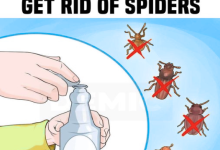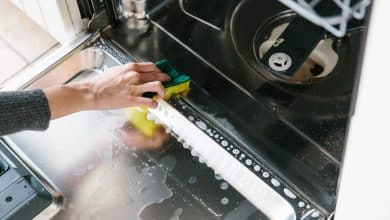You do not where to start to reorganize your own home? Don’t worry, you’re in the right place. In this post, we’ll show you some decluttering tips that help you have a clutter-free haven.
1. Think about your overall goal

Decluttering is often associated with minimalism—owning as few things as possible. While minimalism can be a great lifestyle choice, others enjoy owning more items and derive pleasure and joy from their possessions.
Before you start decluttering your house, decide what you want the end product to look like, so you don’t get rid of too much or too little.
2. Break up the work

Decluttering is a big job, and setting out to tackle your entire house can leave you feeling overwhelmed, frustrated, or confused about where to start. Instead, break your goal into smaller goals that will help you achieve a sense of accomplishment along the way.
A great way to tackle the decluttering process is by making a list of your rooms and the order you want to work on them (for instance, your closet, your medicine cabinet, or your basement). You can also list items by group and sort through them based on their grouping (for instance, your books, clothes, or knick-knacks). Choose the first room or group of items you want to declutter and start small (think a shelf or a drawer).
3. Separate donations and trash

Before you start going through your things, set up a system where you have a clear place for items that you’re going to give away to a secondhand store and a trash bag for items you’re going to throw away. Using this method allows you to organize as you go. It’s also a good idea to set up bins for current projects you’re working on, or for items you need to return to someone else.
4. Don’t worry about the price

You may find yourself looking at a lightly-used piece of furniture and thinking about how much you paid for it. The price you paid for the item is a “sunk cost”—you’ve already paid the price for it, and keeping it around (or paying to repair it if it’s showing wear) won’t necessarily add more value to your life.
When deciding whether to keep something or get rid of it, release yourself from thinking about previous costs and encourage yourself to think only about the present and future—consider if keeping the item will positively impact your life. If it doesn’t, it’s time to let it go, whether you want to sell it or donate it.
5. Get rid of duplicates
If you discover that you own multiples of the same item—for example, four different can openers—ask yourself if you need all of these items. Did you buy a second one because you couldn’t find the first one? If so, resolve to keep one in a convenient place and donate or sell the rest.
6. Pay special attention to surfaces

Flat open surfaces like coffee tables, countertops, home office desks, nightstands, laundry room counters, and even the tops of kitchen cabinets can be magnets for junk piling up—it’s easy to use them as de facto storage spaces for everything from keys to trash to coins to old appliances.
If you’re noticing a lot of clutter on your flat surfaces, think of a way to organize your habits—for instance, placing a small, attractive “junk box” on your kitchen counter where you can throw your keys, wallet, and other smaller items when you come into the house.
7. Make your storage spaces beautiful

If you spend a ton of time meticulously reorganizing and decluttering your home only to store everything in unsightly cardboard boxes or shoe boxes, you may end up feeling like your house doesn’t look any neater. When you start a decluttering project, get creative about your space and think of storage solutions to organize the items you’ll have left.
Are there more attractive storage bins you can use for your items? Can you add shower rods or a clothes rack and hangers near the entryway to hang coats? Can you add a bookshelf or cubby set up for shoes, kitchen items, books, or papers? Install DIY shelving on the wall to keep things from piling up on the counter? Add hooks to your closet wall to store items like purses and jewelry?
8. Ask for help
Even if you’re doing it efficiently, decluttering is a big job for one person. Ask family members or friends to help you with tasks you just don’t feel up to doing yourself—even if it’s just to pick up and put away everything that’s out so that you have space to declutter. Plus, the opinions of a trusted friend can often help you get rid of old items you’ve been hesitant to discard.
9. Set up natural declutterers

If you notice a “problem area” where more clutter than average accumulates, think of ways to avoid that buildup in the future. Do you have a bad habit of letting junk mail pile up on the coffee table or kitchen counter? Set up a recycling bin right next to where you look at your mail, so you’ll naturally toss the junk before it has a chance to pile up.
10. Declutter regularly
Clutter will start to accumulate, even for vigilant homeowners who are consistently tidying up. Rather than letting the clutter frustrate you, accept that it’s normal—and commit to occasional “mini-de-clutterings” and cleanups (whether that’s once a month or once a year) to keep a mess-free home.







